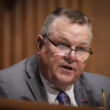Cancer Rates Increased Among Millennials And Gen X, Study Suggests—Here’s Why
Topline
The probability of developing almost 20 types of cancers increased among millennials and Generation X compared to baby boomers, according to a new study, and the researchers believe rising obesity rates and more consumption of ultra-processed foods among younger generations may be to blame.
A senior woman battling cancer sits in a high back chair as she talks with her oncologist.
getty
Key Facts
The study looked at 23.6 million Americans who were diagnosed with 34 types of cancer and 7.4 million deaths from 20 different cancers from participants who were between the ages of 25 and 84 between 2000 and 2019.
The researchers found incidence rates for 17 different types of cancers successively increased among Generation X and millennials when compared to rates among boomers, according to a Lancet study published Wednesday by the American Cancer Society.
Although the death rates for most cancer types stabilized or decreased among younger generations, they increased for uterine corpus, liver (only in women), gallbladder, testicular and colorectal cancers.
Among the cancers with higher incidence rates in millennials compared to boomers, the range was from 12% higher for ovarian cancer, to 169% higher for uterine cancer.
Which Cancers Increased Among Gen X And Millennials?
The 17 cancers that increased in younger generations were colorectal, uterine corpus, gallbladder, kidney, pancreas, myeloma, leukemia, testicular, estrogen receptor positive breast cancer, small intestine, ovarian, female liver, female non-HPV-associated oral and throat, male anus, male Kaposi sarcoma and gastric cardia and non-gastric cardia stomach cancers. Millennials were two-to-three times more likely to develop thyroid, pancreas, small intestine, kidney and renal pelvis cancers than boomers, according to the study. Gen X had the highest rates among non-HPV-associated oral and throat cancers when compared to the older cohort.
Why Did Cancer Rates Increase Among Younger Generations?
The researchers believe the increase in cancer rates suggest younger generations are becoming more exposed to carcinogens in their earlier lives than older generations. Among the 17 cancers that had higher rates, 10 were obesity related, so the researchers believe rising obesity rates may also play a role. Obesity rates have been increasing for decades, and almost half of the U.S. is predicted to be obese by 2030, according to research published in the New England Journal of Medicine. The rise in gastrointestinal cancers could also point to a change in gut microbiomes due to the diets younger generations eat, according to the Lancet researchers. Several studies have linked diets high in ultra-processed foods and antibiotics to certain cancers, and research has found the consumption of ultra-processed foods among Americans has increased substantially since 2001.
Surprising Fact
Cervical cancer drastically decreased among millennials and Gen X, particularly in millennial women. This may be linked to the effectiveness of the HPV vaccine, according to the researchers. The HPV vaccine was first approved in 2006 for girls between nine and 26, five years before it was approved for use in men. The vaccine has historically been perceived as a women’s only vaccine even though men also benefit from it.
Crucial Quote
“The increase in cancer rates among this younger group of people indicate generational shifts in cancer risk and often serve as an early indicator of future cancer burden in the country,” Dr. Ahmedin Jemal, senior author of the Lancet study and senior vice president of surveillance and health equity science at the American Cancer Society, said in a statement.








 #LittleLeagueClassic pic.twitter.com/Mrp1CZ0USL — MLB (@MLB) August 18, 2024 WILLIAMSPORT, Pa. – Aaron Judge was the center of attention as the Yankees took in the sights and
#LittleLeagueClassic pic.twitter.com/Mrp1CZ0USL — MLB (@MLB) August 18, 2024 WILLIAMSPORT, Pa. – Aaron Judge was the center of attention as the Yankees took in the sights and